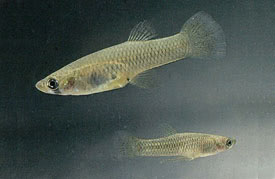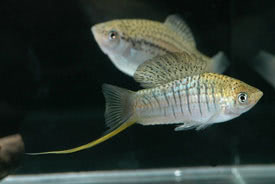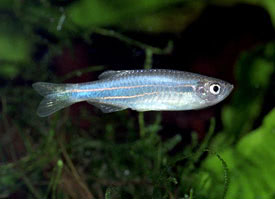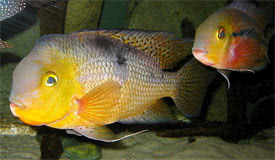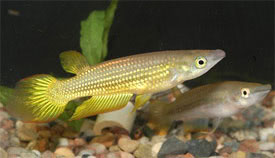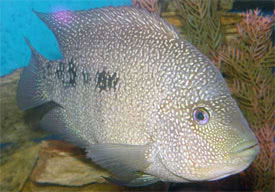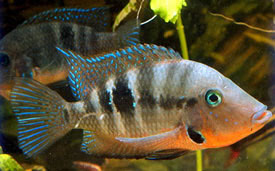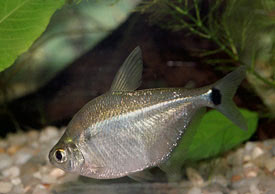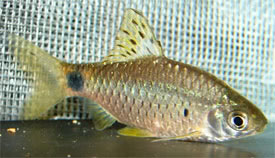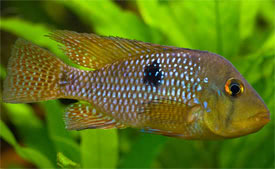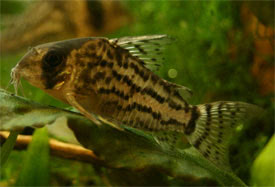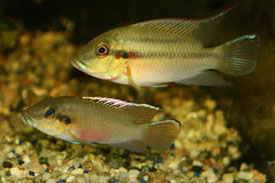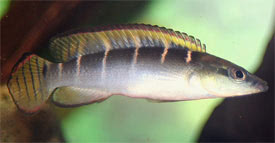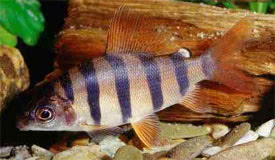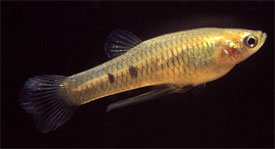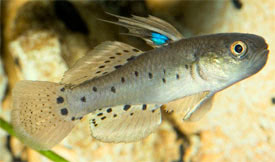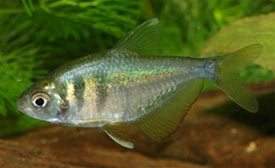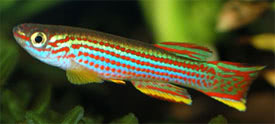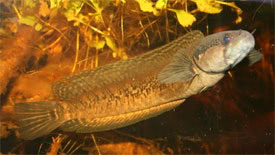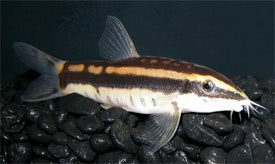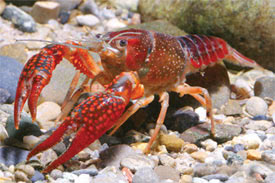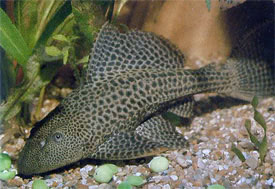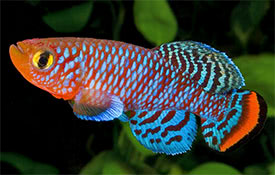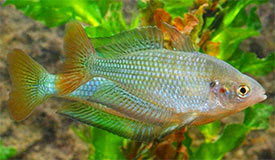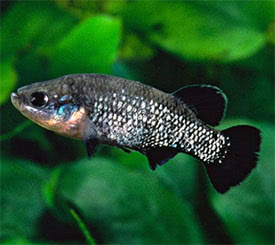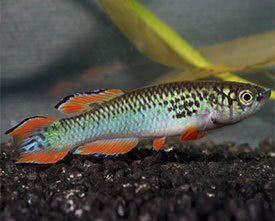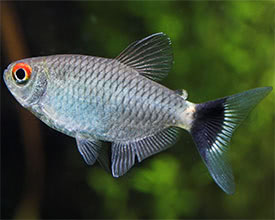
 Magyarul / Hungarian
Magyarul / Hungarian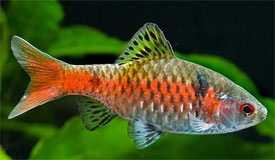
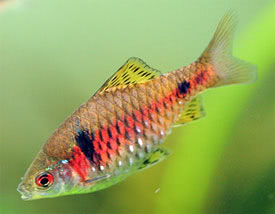
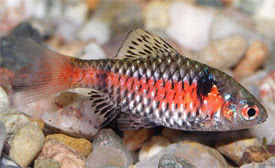

- Scientific name: Pethia padamya
- Synonyms: Puntius padamya, Puntius 'odessa'
- Common name: Odessa Barb, Scarlet Barb
- Group: Cyprinids
- Habitat: Asia; Northern Myanmar (Burma)
- Size: 7 cm
- Biotope: Inhabits in a man-made pond in a village called Toe Gyi. It has also been collected from lower stretches of the river Chindwin, and from Irrawaddy River.
- Social behavior: A peaceful and active shoaling fish. Can be kept in a biotope aquarium with danios which like similar conditions. Males will also develop better colors in the presence of conspecific rivals.
- Diet: Omnivorous; in nature they eat small invertebrates and also alage. In aquarium give them small live and frozen foods, and quality dried foods and vegetables.
- Breeding: Quite easy
- Tank: Minimum 85 litres
- Population: 5-6 fish for 120 litres
- Decoration: The fish will show its best colors over a dark substrate with dim lighting in a heavily planted aquarium. Odessa Barb may nibble some softer-leaved plants.
- Temperature: 20-26 °C
- pH: 6-8
- Hardness: 5-20 NK°
- Lifespan: 5-6 years
Description: Puntius padamya has been in the aquatic trade since the early 1970’s but was only described to science in 2008, because the exact origin of the fish remained unclear for many years. This fish first appeared near Odessa, Ukraine (hence the common name) and was assumed to be a hybrid of other barb species like Puntius conchonius, Puntius ticto and Puntius cumingii. These myths were upheld until wild populations of Puntius padamya were discovered by Ralf Britz in early 2003. One interesting fact regarding the wild vs. "aquarium strain" variants of Puntius padamya is that the farm-produced fish seem to hold their colouration better when stressed. Both sexes possess a vertically elongate dark blotch behind the head and a small dark blotch on the side of the caudal peduncle.
Males have a thick band of bright red or orange coloration on the flanks from the head to the caudal fin and exhibiting more well-defined markings in the fins. Females are thicker-bodied and more grayish in color with less prominent black markings on the body and has some orange pigmentation in the ventral fins. Breeding is quite easy in a smaller (40 litres) separate tank with clumps of fine-leaved plants such as Java moss and dim lighting. The water should be soft, around gH 8, with a temperature of 26 °C. Odessa Barb can be spawn in pairs or in a small group. Condition the fish with plenty of small live foods. Parents should be removed as soon as the eggs are noticed, as the fish will eat them. The eggs will hatch in 24-48 hours and the fry become free swimming after another 24 hours. The fry should be fed with infusoria or liquid fry food, until they are large enough to accept microworm or Artemia nauplii.




